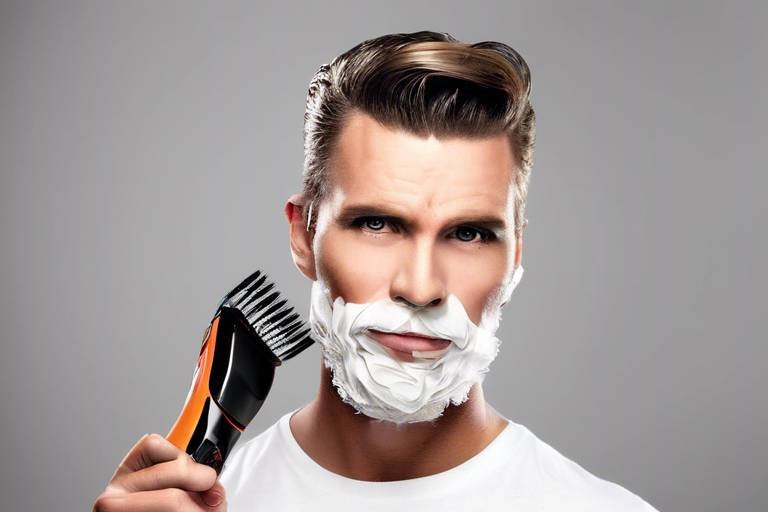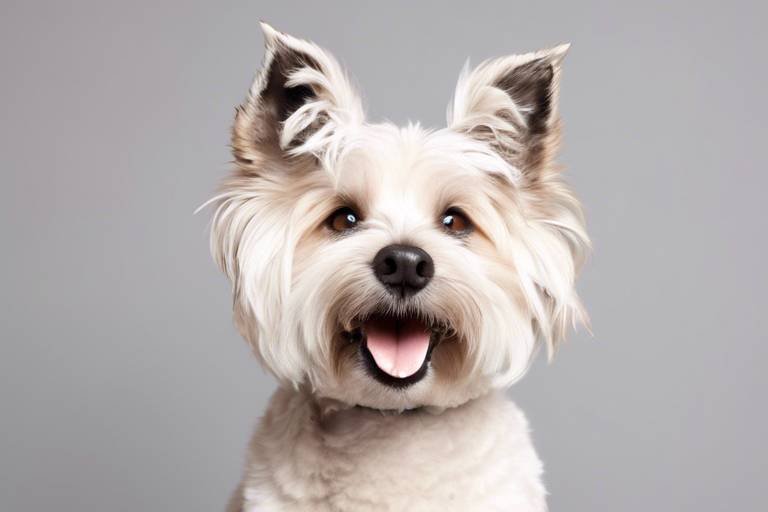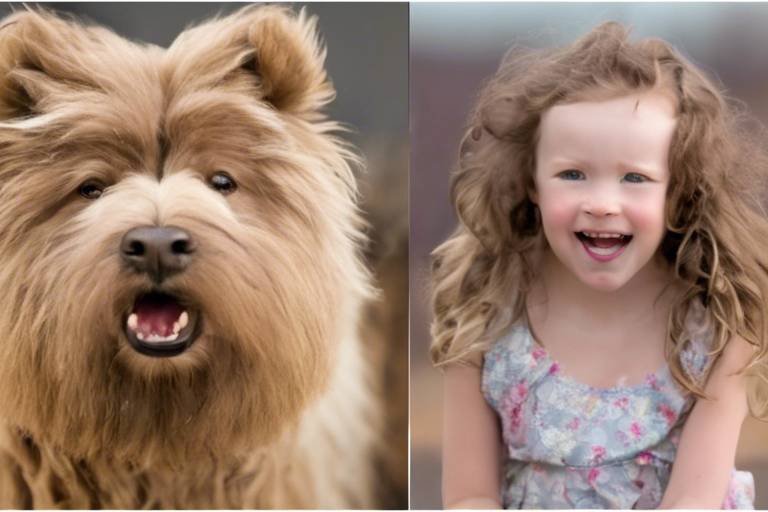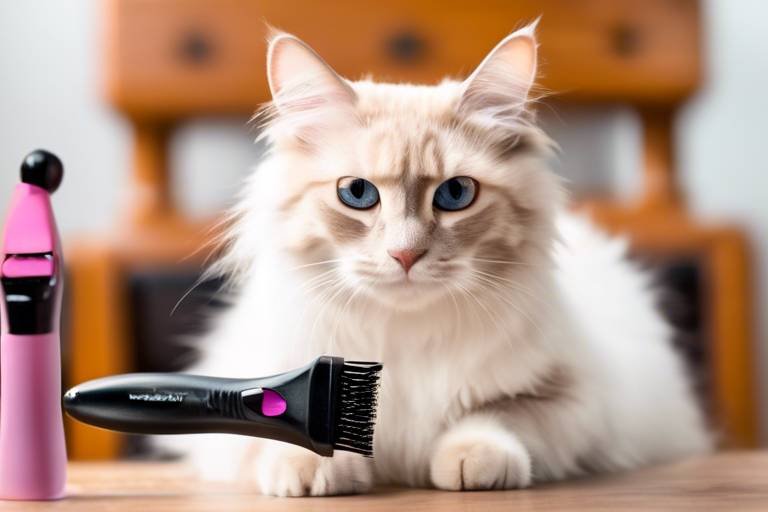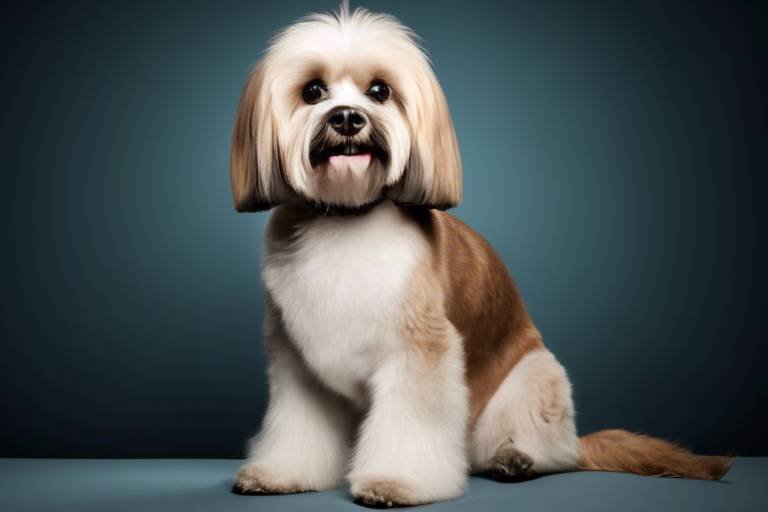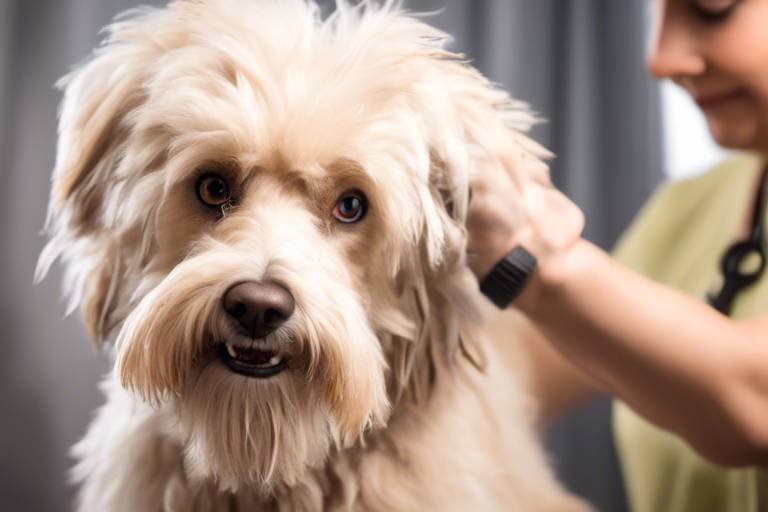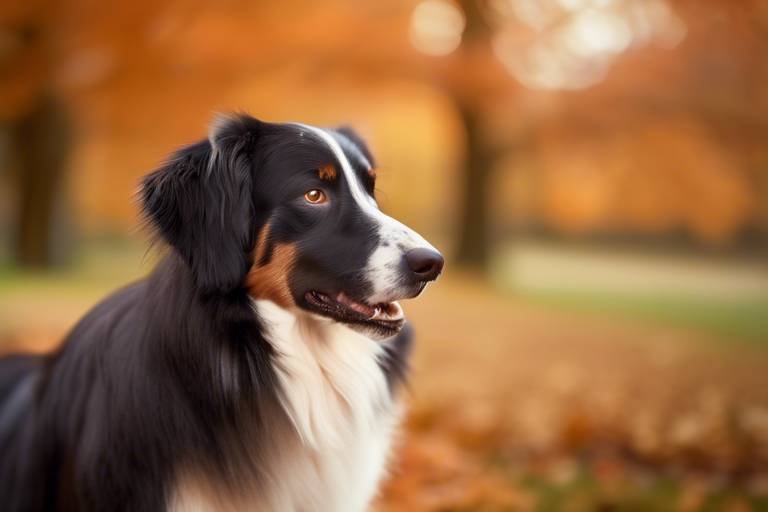The Best Time to Start Grooming Your Puppy
Starting the grooming process for your puppy can feel like a daunting task, but it doesn't have to be! In fact, the best time to start grooming your furry friend is when they are just a few weeks old. This early introduction sets the stage for a lifetime of healthy grooming habits. Think of it as planting a seed; the sooner you plant it, the more time it has to grow strong and resilient. Not only does early grooming help your puppy get used to the process, but it also opens the door to a stronger bond between you and your pet. So, let’s dive into why starting early is crucial and how you can make it a fun experience for both of you!
Puppies go through several stages of development, and each stage is a unique opportunity to introduce them to grooming. From the moment they’re born, they begin learning about their environment, and this includes how they respond to touch and handling. By starting grooming at an early age, you’re not just brushing their coat; you’re teaching them to be comfortable with various sensations and tools. Imagine your puppy as a sponge, soaking up experiences that will shape their behavior as they grow. The earlier you start, the more adaptable and confident they will become in unfamiliar situations.
Starting grooming when your puppy is young comes with a plethora of benefits. For one, it significantly reduces anxiety around grooming as they mature. Just like how we feel less anxious about things we are familiar with, your puppy will feel more at ease during grooming sessions if they’ve been exposed to it from a young age. Additionally, grooming is a fantastic bonding experience. It’s a time when you can connect with your puppy, petting them, talking to them, and establishing trust. This trust is vital for a healthy relationship and can translate into better behavior as they grow.
Grooming is not just about keeping your puppy looking cute; it also serves as an excellent opportunity for socialization. During grooming, you can expose your puppy to different sounds, smells, and people, which can significantly enhance their adaptability and confidence. For instance, if you introduce them to the sound of a vacuum cleaner while grooming, they’ll be less likely to freak out when they hear it in the future. Think of it as a crash course in the world around them, making them more well-rounded and less fearful of new experiences.
Incorporating various tools and techniques during grooming can help your puppy learn to accept different sensations. For example, using a soft brush, then transitioning to a comb, and finally introducing clippers can prepare them for future grooming sessions. Each new tool provides a unique experience, and by gradually introducing them, you’ll help your puppy develop a positive association with grooming. It’s all about making it feel like a fun adventure rather than a chore!
Regular grooming is a fantastic way to build trust between you and your puppy. When they see that you are gentle and caring during grooming, it fosters a sense of security. This trust is crucial, especially when it comes to more involved grooming tasks like nail trimming or bathing. Imagine how much easier it will be for you to groom a puppy that trusts you completely! This sense of security not only enhances your relationship but also contributes to their overall well-being.
Creating a consistent grooming routine from an early age helps set expectations for your puppy. Just like how kids thrive on routine, so do puppies! When they know that grooming is a regular part of their lives, they are less likely to resist it. This routine can be as simple as brushing them once a week or giving them a bath once a month. The key is consistency. Over time, your puppy will learn that grooming is just another part of their day, much like eating or playing.
Selecting appropriate grooming tools is essential for a positive experience. The right brushes, clippers, and shampoos can make grooming easier and more enjoyable for both you and your puppy. When choosing tools, consider your puppy’s breed and coat type. For instance, long-haired breeds may require a slicker brush, while short-haired breeds might do well with a rubber grooming mitt. It’s all about finding what works best for your furry friend!
Different breeds have varying grooming needs, so it’s vital to choose tools that cater to specific coat types. Here’s a quick comparison table to help you understand:
| Breed Type | Recommended Tools |
|---|---|
| Long-Haired | Slicker Brush, Wide-Toothed Comb |
| Short-Haired | Rubber Grooming Mitt, Bristle Brush |
| Curly-Haired | Pin Brush, Dematting Tool |
Safety should always be a priority during grooming. Knowing how to handle tools properly and keeping your puppy calm can prevent accidents and ensure a safe grooming experience. Always start slow, and if your puppy shows signs of distress, take a break. Remember, grooming should be a positive experience, not a stressful one!
- At what age should I start grooming my puppy? It's best to start grooming as early as 8 weeks old.
- How often should I groom my puppy? This depends on the breed, but a general rule is once a week for most puppies.
- What if my puppy doesn’t like grooming? Take it slow, use treats, and make it a fun bonding time.
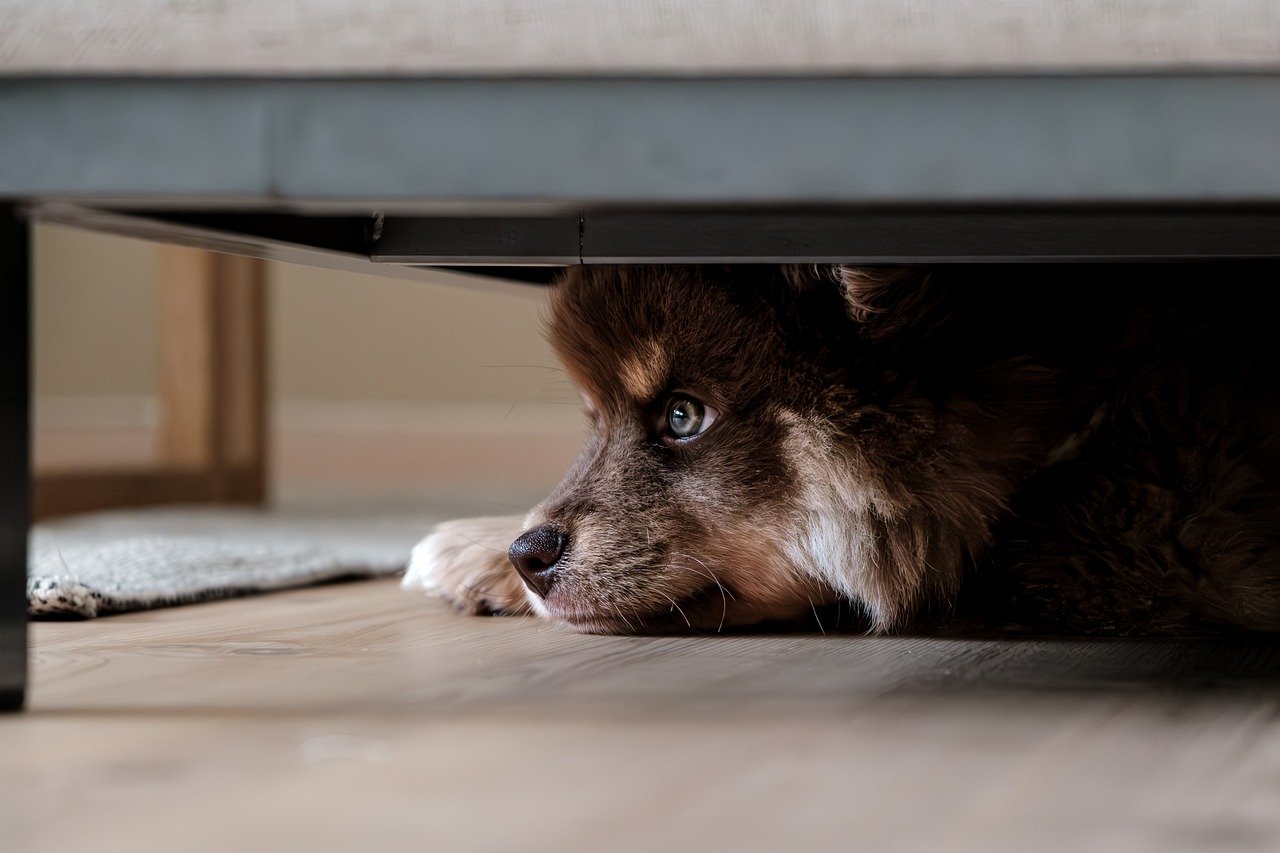
Understanding Puppy Development
When it comes to grooming your puppy, timing is everything. Puppies are not just adorable balls of fur; they are also undergoing significant growth and development during their early months. Understanding these stages can help you determine the best time to start grooming. Typically, puppies are born with their eyes closed and are entirely dependent on their mother for care. As they grow, they begin to open their eyes, explore their surroundings, and develop their personalities. This is where early grooming can play a pivotal role in shaping their behavior and reactions to various stimuli.
During the first few weeks of life, puppies are in the neonatal stage, where they rely heavily on their senses of touch and smell. By the time they reach about three weeks old, they start entering the transitional stage, where they become more aware of their environment. This is an ideal time to start gentle handling and light grooming practices. It’s crucial to introduce them to grooming tools gradually, as this early exposure can help reduce anxiety later on.
As puppies transition into the socialization stage (around 3 to 14 weeks), they are like little sponges, soaking up experiences that will shape their future behavior. This is a fantastic time to introduce grooming routines, as they are more open to new experiences. Think of it as laying the foundation for a strong relationship. Just like a child learns to ride a bike with the help of a supportive adult, your puppy will learn to accept grooming with your gentle guidance. Regular grooming during this stage not only helps them get used to the process but also promotes bonding between the pet and owner.
By the time puppies reach 14 weeks and beyond, they enter the juvenile stage. At this point, they are more energetic and curious, making it even more important to establish a grooming routine. If they’ve had positive experiences with grooming in their earlier stages, they are likely to approach grooming sessions with less fear and more curiosity. This is where you can really start to see the benefits of early grooming shine through, as your puppy learns to trust you and the grooming process.
In summary, understanding the various stages of puppy development can significantly influence when and how you start grooming. Early exposure not only helps your puppy become accustomed to grooming tools and techniques but also enhances their overall adaptability and confidence. The earlier you start, the more comfortable your furry friend will be, making grooming a delightful experience for both of you!
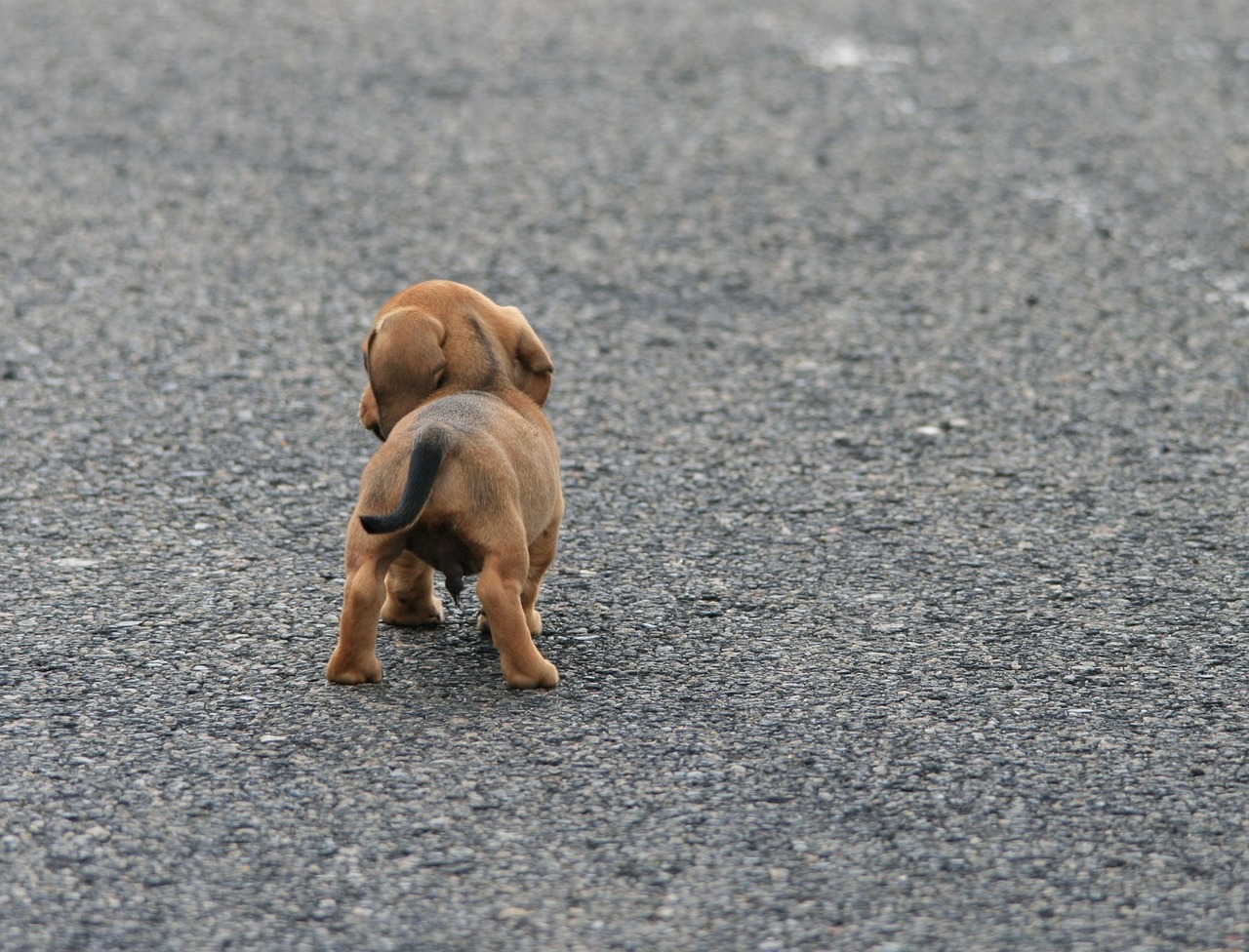
Benefits of Early Grooming
Starting grooming at a young age is not just about keeping your puppy looking cute; it’s a fundamental part of their development that brings a myriad of benefits. Think about it: just like us, puppies need to get used to various experiences in life. Early grooming helps them adapt to the process, making it a less stressful affair as they grow older. When you introduce grooming to your puppy early on, you are essentially laying down the groundwork for a lifetime of positive grooming experiences.
One of the most significant advantages of early grooming is the reduction of anxiety. Imagine your puppy, a little ball of fur and energy, being exposed to the clippers, brushes, and even baths for the first time. If you wait too long to introduce these tools, your puppy might associate them with fear and discomfort. However, by starting early, you help your puppy learn that grooming is just another part of their routine, much like eating or playing. This familiarity can drastically lower their anxiety levels and make future grooming sessions a breeze.
Moreover, early grooming promotes bonding between you and your furry friend. Each grooming session becomes an opportunity for you to spend quality time together. As you brush their coat or trim their nails, you’re not just maintaining their appearance; you’re also building a stronger relationship. Your puppy learns to trust you, knowing that you’re there to take care of them. This trust is invaluable and can lead to a more harmonious relationship in the long run.
Grooming is also an excellent avenue for socialization. During grooming sessions, you can expose your puppy to different sounds, environments, and even people. For example, the sound of a hairdryer or the sight of a grooming salon can seem intimidating at first. However, by introducing these elements slowly and positively, you help your puppy build confidence and adaptability. This socialization can make a world of difference when they encounter new situations in the future.
Incorporating various tools and techniques during grooming can also help your puppy learn to accept different sensations. For instance, using a soft brush can feel comforting, while clippers might create a buzzing sensation that’s new to them. By gently introducing these experiences, you prepare your puppy for future grooming sessions, making them more comfortable with different sensations. It’s like teaching them that the world is full of exciting experiences, and grooming is just one of them!
Regular grooming is a fantastic way to build trust between you and your puppy. When you consistently groom your puppy, you foster a sense of security and comfort. They learn that grooming is a safe and loving experience, which can enhance their overall well-being. Just think of grooming as a nurturing ritual that strengthens your bond. Your puppy will come to see you as their protector and caregiver, which can lead to a more confident and well-adjusted adult dog.
Creating a consistent grooming routine from an early age sets clear expectations for your puppy. They begin to understand that grooming is a normal part of life, just like going for walks or eating meals. A routine helps to instill discipline and can even make your puppy more receptive to other training. Remember, puppies thrive on consistency; it gives them a sense of stability and helps them navigate the world around them.
In summary, the benefits of early grooming are extensive and multifaceted. From reducing anxiety and promoting bonding to enhancing socialization and building trust, early grooming lays the foundation for a happy and healthy relationship between you and your puppy. So, why wait? Start grooming your puppy today and watch as they flourish into a well-groomed and confident adult dog!
- What age should I start grooming my puppy? It’s best to start grooming your puppy as early as 8 weeks old, gradually introducing them to different tools and techniques.
- How often should I groom my puppy? The frequency of grooming depends on the breed and coat type, but a good rule of thumb is to groom them at least once a week.
- What tools do I need for grooming? Basic grooming tools include a brush, comb, nail clippers, and puppy-safe shampoo.
- How can I make grooming more enjoyable for my puppy? Use treats, praise, and a gentle touch to create a positive experience. Make it a fun bonding time!
Socialization Through Grooming
Grooming your puppy is more than just a necessity for hygiene; it's a fantastic way to enhance their social skills! Think of grooming sessions as mini-adventures where your puppy gets to explore the world around them in a safe and controlled environment. By introducing your furry friend to various experiences during grooming, you’re not only keeping them clean but also helping them develop essential skills that will serve them throughout their lives.
When you groom your puppy, you're exposing them to a variety of new sensations. From the gentle vibration of clippers to the feel of different brushes against their fur, these experiences can be both stimulating and educational. The key is to keep the atmosphere relaxed and positive. You can use treats and praise to create a positive association with grooming, which will help them feel more comfortable with the process. Imagine how much easier it will be for your puppy to handle a visit to the groomer if they’ve already learned that grooming is a fun and rewarding experience!
Moreover, grooming sessions can serve as a great opportunity for socialization. During these times, try to expose your puppy to different sounds, sights, and even people. For instance, you can play soft music in the background or allow them to meet new friends (both human and canine) while getting groomed. This exposure helps them become more adaptable and confident in various situations. Just like humans, puppies thrive on experiences, and the more diverse their experiences are, the better they will adapt to new environments.
Furthermore, consider incorporating different grooming tools and techniques. For example, using a soft brush, a comb, or even a grooming glove can help them get accustomed to various sensations. Each tool offers a different experience, and by gradually introducing these tools during grooming, you’re teaching your puppy to accept and enjoy these sensations rather than fear them. This process is akin to teaching a child to ride a bike—start with training wheels, and as they gain confidence, you can remove them!
In conclusion, grooming is not just about maintaining your puppy's appearance; it's a vital part of their socialization process. By making grooming a fun, positive, and varied experience, you're setting your puppy up for a lifetime of confidence and adaptability. So, grab those brushes and clippers, and let the socialization begin!
- At what age should I start grooming my puppy? It's best to start grooming your puppy as early as 8 weeks old to help them acclimate to the process.
- How often should I groom my puppy? The frequency depends on the breed and coat type, but generally, once a week is a good starting point.
- What tools do I need for grooming? Essential tools include a brush, comb, nail clippers, and puppy-safe shampoo.
- How can I make grooming enjoyable for my puppy? Use treats, praise, and short grooming sessions to create a positive experience.
Introducing New Experiences
Introducing your puppy to new experiences during grooming is not just about keeping them clean; it's about helping them grow into well-rounded, confident dogs. Think of grooming as a mini-adventure where every brush stroke, every sound, and every new tool is a chance for your puppy to learn and adapt. Just like a child who explores the world around them, puppies thrive on new experiences. By incorporating various tools and techniques into your grooming routine, you can help your pup embrace the sensations that come with grooming.
For instance, using different types of brushes can introduce your puppy to a variety of textures. You might start with a soft brush to make them feel comfortable, and then gradually introduce a slicker brush. This approach not only familiarizes them with the grooming process but also helps them understand that different sensations can be enjoyable. It’s like introducing a child to different flavors of ice cream; some they might love, and some they might need a little time to accept.
Moreover, incorporating grooming sessions in different environments can also be beneficial. Try grooming your puppy in various locations around your home or even outside. This variation helps them associate grooming with positive experiences in different settings, reducing anxiety and making them more adaptable. Just like we feel more at ease in familiar environments, dogs also appreciate a change of scenery.
To make the experience even more enjoyable, consider using treats as positive reinforcement. Whenever your puppy remains calm or accepts a new tool, reward them with a small treat. This not only makes grooming a positive experience but also strengthens the bond between you and your furry friend. It’s like giving your puppy a little high-five every time they do something great!
In summary, introducing new experiences during grooming is essential for your puppy's development. By using various tools, changing environments, and incorporating positive reinforcement, you can help your puppy become more comfortable with grooming. This approach not only prepares them for future grooming sessions but also fosters a sense of trust and security in your relationship.
- At what age should I start grooming my puppy? It's best to start grooming your puppy as early as 8 weeks old to get them used to the process.
- What tools do I need for grooming? Basic tools include a soft brush, a slicker brush, nail clippers, and puppy shampoo. The specific tools may vary based on your puppy's breed.
- How often should I groom my puppy? Depending on the breed, grooming can be done weekly or bi-weekly. Long-haired breeds may require more frequent grooming.
- What if my puppy doesn't like grooming? Start slowly and use positive reinforcement techniques, such as treats and praise, to create a positive association with grooming.
Building Trust and Confidence
Building trust and confidence between you and your puppy is one of the most rewarding aspects of grooming. Imagine your puppy as a little sponge, soaking up experiences and emotions. When you start grooming at an early age, you’re not just cleaning their fur; you’re creating a bond that can last a lifetime. Think of grooming as a dance; the more you practice together, the more in sync you become. The key is to make each grooming session a positive experience.
To achieve this, consistency is crucial. Regular grooming sessions help your puppy understand that this is a normal part of life. Just like how kids learn to trust their parents through routine, your puppy will feel more secure knowing what to expect. Use a calm and soothing voice during grooming to reassure them, and always reward them with treats or praise when they behave well. This not only reinforces good behavior but also creates a positive association with grooming.
Moreover, consider incorporating playful elements into the grooming process. For instance, you can turn brushing into a game. Use a gentle brush and let your puppy sniff it first. This way, they can explore the tool at their own pace. Gradually introduce the brushing motion, and don’t forget to pause frequently to give them a chance to relax. This approach reduces anxiety and allows your puppy to feel more comfortable with each session.
Additionally, it’s essential to recognize your puppy's body language. If they seem anxious or uncomfortable, take a step back. Perhaps they need a break or a little more encouragement. By being attentive to their cues, you build trust, showing them that their comfort is your priority. Over time, your puppy will learn that grooming is not a scary experience but rather a bonding moment filled with love and care.
To sum it up, building trust and confidence through grooming is about creating a safe and enjoyable environment. Here are some quick tips to help you along the way:
- Be patient and gentle.
- Use positive reinforcement.
- Pay attention to your puppy's comfort level.
- Make grooming a fun and engaging activity.
By following these guidelines, you’ll not only have a well-groomed puppy but also a furry friend who trusts you wholeheartedly. Remember, every grooming session is an opportunity to strengthen your bond, so make it count!
- At what age should I start grooming my puppy? It's best to start grooming as early as 8 weeks old to help them get used to the process.
- How often should I groom my puppy? This depends on the breed and coat type, but generally, a weekly grooming session is a good start.
- What tools do I need for grooming? Basic tools include a brush, nail clippers, and a gentle shampoo. The specific tools may vary based on your puppy's breed.
- Can grooming help with my puppy's anxiety? Yes! Regular grooming can help reduce anxiety by creating a routine and a sense of security.
Establishing a Routine
Establishing a grooming routine for your puppy is akin to setting the foundation for a beautiful house. Just as a solid foundation ensures the stability of a home, a consistent grooming routine lays the groundwork for your puppy's comfort and well-being. By starting early, you help your furry friend understand that grooming is not just a chore, but a regular part of life that comes with love and care. Imagine the joy of your puppy eagerly awaiting grooming time, tail wagging in anticipation, rather than cowering in fear! This transformation is possible with a little patience and consistency.
To create an effective grooming routine, consider these key steps:
- Frequency: Initially, aim for short grooming sessions once or twice a week. As your puppy gets accustomed to the process, you can gradually increase the frequency.
- Timing: Choose a time that suits both you and your puppy. After a walk or play session can be ideal, as your puppy will be calmer and more receptive.
- Environment: Create a comfortable grooming space. A quiet area with good lighting can help your puppy feel at ease. Consider using a non-slip mat to prevent any slipping during grooming.
Consistency is key! Just like teaching a child to brush their teeth, regular grooming helps your puppy recognize that this is a normal activity. You can even incorporate fun elements, such as a favorite toy or treat, to make the experience more enjoyable. For example, giving your puppy a special chew toy during grooming can distract them and create positive associations with the process.
Additionally, don't forget to celebrate small victories. Whether it's a successful brushing session or a calm bath time, rewarding your puppy with praise or treats reinforces their good behavior. This not only builds their confidence but also strengthens the bond you share. Over time, your puppy will learn to trust you during grooming, seeing it as a time for bonding rather than a stressful task.
Remember, patience is essential. Every puppy is unique, and some may take longer to adjust than others. If your puppy seems anxious or resistant, take a step back and allow them to acclimate at their own pace. You might consider breaking down the grooming process into smaller, manageable steps. For instance, start by simply brushing for a few minutes before gradually introducing clippers or bath time. This way, you're not overwhelming your puppy, and they can build confidence with each positive experience.
In summary, establishing a grooming routine is about creating a positive, enjoyable experience for both you and your puppy. With time, consistency, and a sprinkle of love, your puppy will not only look great but also feel great about grooming sessions!
Q: How often should I groom my puppy?
A: Initially, groom your puppy once or twice a week, gradually increasing frequency as they become more comfortable with the process.
Q: What if my puppy doesn't like grooming?
A: If your puppy shows signs of anxiety, break down the grooming process into smaller steps, and use treats and praise to create positive associations.
Q: What tools do I need for grooming?
A: The tools you need will depend on your puppy's breed and coat type. Generally, a good brush, clippers, and a gentle shampoo are essential.
Q: Can grooming help with my puppy's behavior?
A: Yes! Regular grooming can help reduce anxiety and improve behavior by building trust and creating a routine your puppy can rely on.
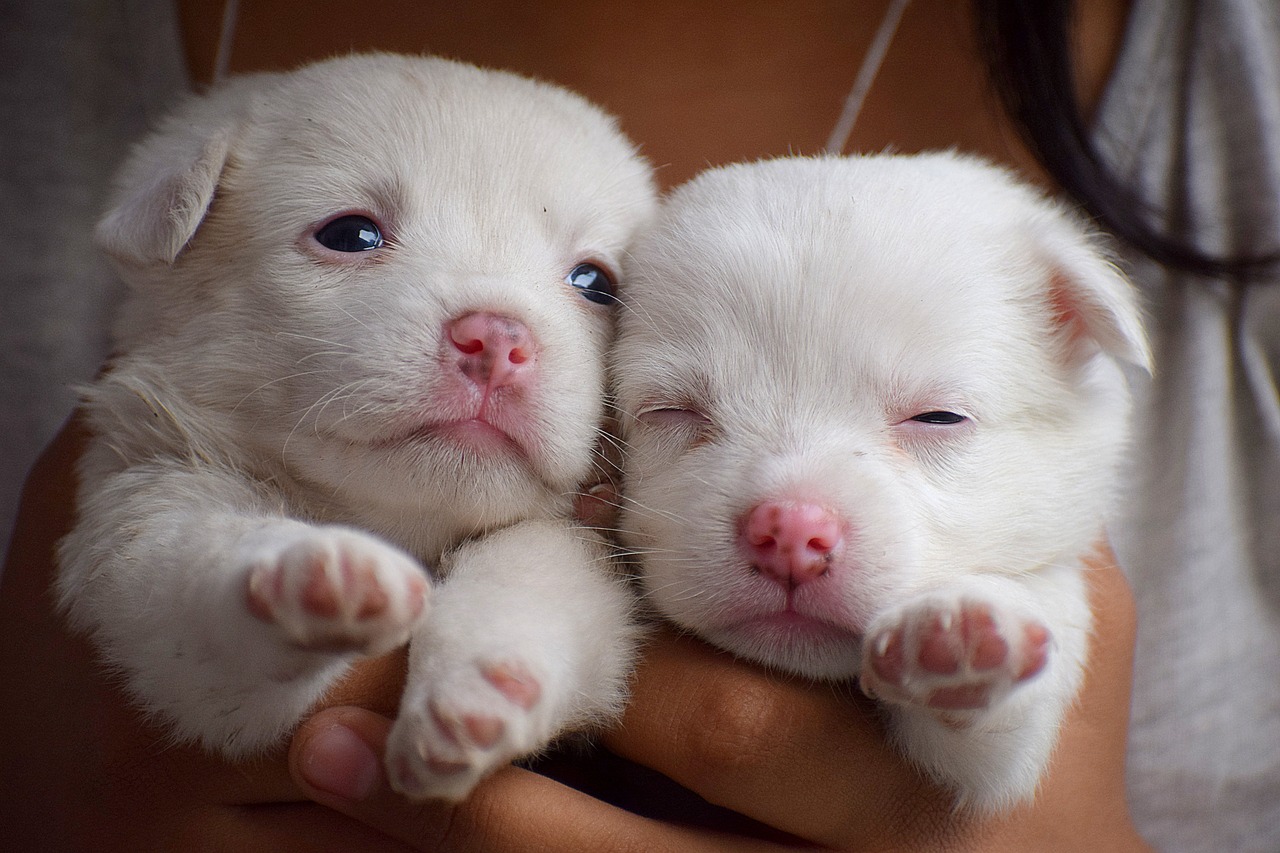
Choosing the Right Tools
When it comes to grooming your puppy, selecting the right tools is crucial for a positive experience. Imagine trying to cut hair with a dull pair of scissors; it would be frustrating and uncomfortable for both you and your furry friend. The same principle applies to grooming tools. Using the appropriate brushes, clippers, and shampoos tailored to your puppy's specific needs can make the grooming process smoother and more enjoyable.
First and foremost, consider the type of coat your puppy has. Different breeds have varying grooming requirements, and understanding these needs is essential. For example, a long-haired breed like a Maltese will require a different brush compared to a short-haired breed like a Beagle. Here’s a quick breakdown:
| Breed Type | Recommended Tools |
|---|---|
| Long-haired | Pin brush, slicker brush, and comb |
| Short-haired | Rubber brush, bristle brush |
| Curly-haired | Curved comb, slicker brush |
In addition to brushes, you’ll also need to consider grooming clippers and nail trimmers. A good quality clipper can make a world of difference, especially if your puppy has a thick or curly coat. Look for clippers that are specifically designed for pets, as they tend to be quieter and more efficient. Nail trimming can be daunting, but using a high-quality nail clipper or grinder can simplify the process and keep your puppy safe.
Another important factor is the choice of shampoo. Puppies have sensitive skin, so it’s vital to select a shampoo that is gentle and formulated specifically for their skin type. Avoid human shampoos, as they can disrupt the natural pH balance of your puppy’s skin. Instead, look for products labeled as puppy-safe or hypoallergenic.
Lastly, don't forget about grooming accessories! Items like grooming gloves can help remove loose hair while providing a soothing massage for your puppy. These tools not only make the process easier but also enhance the bonding experience between you and your furry companion.
In summary, choosing the right grooming tools is about understanding your puppy's specific needs and ensuring their comfort throughout the grooming process. By investing in high-quality brushes, clippers, shampoos, and accessories, you’re setting the stage for a positive grooming experience that will benefit both you and your puppy in the long run.
- What tools do I need for grooming my puppy? You will need brushes, clippers, nail trimmers, and puppy-safe shampoo.
- How often should I groom my puppy? It depends on the breed, but generally, grooming should be done every 4-6 weeks.
- Can I use human shampoo on my puppy? No, it's best to use shampoo formulated specifically for puppies to avoid skin irritation.
Grooming Tools for Different Breeds
When it comes to grooming your puppy, one size does not fit all. Different breeds have unique coat types that require specific grooming tools to keep them looking their best. Understanding your puppy's breed can help you choose the right tools, making the grooming process smoother and more enjoyable for both of you. For instance, long-haired breeds like the Yorkshire Terrier or Shih Tzu need tools that can effectively detangle and remove mats, whereas short-haired breeds like the Beagle or Boxer may require tools that focus on shedding and maintaining a healthy coat.
Here’s a quick breakdown of grooming tools tailored for different coat types:
| Breed Type | Recommended Tools |
|---|---|
| Long-Haired Breeds |
|
| Short-Haired Breeds |
|
| Curly-Haired Breeds |
|
Choosing the right tools not only makes grooming easier but also ensures that your puppy remains comfortable throughout the process. For example, a pin brush is perfect for long-haired breeds as it helps to prevent tangles and mats, while a rubber grooming mitt is gentle on short-haired breeds and is excellent for removing loose fur during shedding season. It’s important to invest in quality tools that suit your puppy's specific needs, as this can greatly reduce the risk of discomfort or injury.
Additionally, always remember to introduce new tools gradually. Puppies can be sensitive to unfamiliar sensations, so taking the time to acclimate them to different brushes or clippers can make a world of difference. Use treats and positive reinforcement to create a positive association with grooming tools. This way, your puppy will not only look great but will also enjoy the grooming experience!
Q: How often should I groom my puppy based on its breed?
A: Grooming frequency varies by breed. Long-haired breeds may require grooming every 4-6 weeks, while short-haired breeds might only need it every few months. Always check your specific breed's grooming needs.
Q: What if my puppy is scared of grooming tools?
A: Start by introducing the tools slowly and use treats to create a positive experience. Gradually acclimate your puppy to the sounds and sensations of grooming.
Q: Can I use human grooming tools on my puppy?
A: It's best to use tools specifically designed for pets, as they are tailored to suit their unique coat types and sensitivities.
Safety Considerations
This article explores the ideal age to begin grooming your puppy, the benefits of early grooming, and tips for making the grooming process enjoyable for both you and your furry friend.
Puppies go through various developmental stages, and understanding these can help determine the best time to start grooming. Early exposure to grooming can positively affect their behavior as they grow.
Starting grooming at a young age helps puppies become accustomed to the process, reducing anxiety and making future grooming easier. It also promotes bonding between the pet and owner.
Grooming provides an excellent opportunity for socialization. Exposing puppies to different environments, sounds, and people during grooming can enhance their adaptability and confidence.
Incorporating various tools and techniques during grooming can help puppies learn to accept different sensations and experiences, preparing them for future grooming sessions.
Regular grooming helps build trust between the puppy and owner, fostering a sense of security and comfort that can enhance their overall relationship.
Creating a consistent grooming routine from an early age sets expectations for the puppy and helps them understand that grooming is a normal part of life.
Selecting appropriate grooming tools is essential for a positive experience. The right brushes, clippers, and shampoos can make grooming easier and more enjoyable for both the puppy and the owner.
Different breeds have varying grooming needs, so it’s vital to choose tools that cater to specific coat types. Understanding these needs can streamline the grooming process.
When it comes to grooming your puppy, safety should always be a top priority. Not only do you want to keep your furry friend calm and comfortable, but you also need to ensure that the grooming process is safe for both of you. Here are some essential considerations:
- Proper Tool Handling: Always familiarize yourself with the grooming tools before using them on your puppy. This includes knowing how to handle scissors, clippers, and brushes to avoid any accidental injuries.
- Calm Environment: Create a soothing atmosphere during grooming. A quiet space can help keep your puppy calm, reducing the likelihood of sudden movements that could lead to accidents.
- Supervision: Never leave your puppy unattended while grooming. Puppies are naturally curious and may try to escape or get into trouble if left alone.
- Check for Sensitivities: Be attentive to your puppy's reactions. If they seem uncomfortable or anxious, take a break. It's essential to build a positive association with grooming.
Additionally, always have a first-aid kit on hand. Accidents can happen, and being prepared can make a significant difference. Regularly check your tools for any damage or wear, as using broken or dull tools can lead to injuries.
Q: At what age should I start grooming my puppy?
A: It's best to start grooming your puppy as early as 8 weeks old. This helps them get used to the process and reduces anxiety later on.
Q: What tools do I need to groom my puppy?
A: The essential tools include a brush suitable for your puppy's coat type, nail clippers, and a gentle shampoo. You may also want to invest in grooming scissors for specific areas.
Q: How often should I groom my puppy?
A: This depends on the breed and coat type. Generally, a good rule of thumb is to groom your puppy at least once a week, but some breeds may require daily grooming.
Q: What should I do if my puppy resists grooming?
A: If your puppy resists grooming, take it slow. Introduce grooming tools gradually and reward them with treats and praise to create a positive experience.
Frequently Asked Questions
- When is the best age to start grooming my puppy?
The ideal time to start grooming your puppy is around 8 weeks old. At this age, they are usually ready for gentle grooming sessions, which helps them get accustomed to the process early on.
- What are the benefits of early grooming?
Early grooming helps reduce anxiety during future grooming sessions, promotes bonding between you and your puppy, and aids in socialization. It also helps your puppy learn to accept different sensations and experiences.
- How can I make grooming enjoyable for my puppy?
Start with short sessions filled with positive reinforcement, like treats and praise. Use gentle tools and techniques, and ensure the environment is calm and comfortable to help your puppy associate grooming with good experiences.
- What grooming tools do I need for my puppy?
The tools you need depend on your puppy's breed and coat type. Generally, a soft brush, a comb, and puppy-specific shampoo are good starting points. Always choose tools that are gentle and appropriate for your puppy's size.
- How often should I groom my puppy?
Grooming frequency varies by breed. Long-haired breeds may need grooming several times a week, while short-haired breeds can often be groomed less frequently. Establishing a routine from a young age helps your puppy adapt.
- Is it safe to groom my puppy at home?
Yes, grooming at home can be safe if you use the right tools and techniques. Always supervise your puppy closely, handle tools with care, and remain calm to create a safe grooming environment.
- What should I do if my puppy is fearful of grooming?
If your puppy is fearful, take it slow. Gradually introduce grooming tools, use treats for positive reinforcement, and allow your puppy to explore the tools at their own pace. Patience is key!
- Can grooming help with my puppy's socialization?
Absolutely! Grooming exposes your puppy to different sounds, sights, and people, which can enhance their adaptability and confidence. It's a fantastic opportunity to socialize your furry friend!







